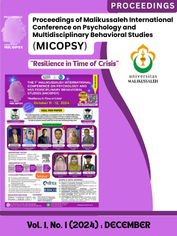Analysis of Self-Harm Behavior in Adolescents Based on Parental Marital Status In Aceh Indonesia
Keywords:
Adolescent, divorced parent, Family, Intact parents, Parental Marital Status, one family Zdie status, Self-harmAbstract
Self-harm is self-injurious behavior as a way to calm down practically, but not to the point of having suicidal intentions. Self-harm behavior is very worrying among adolescents. Family factors are seen as one of the influences on self-harm behavior, especially parental marital status. So based on this, this study aims to analyze differences in self-harm behavior in adolescents based on parental marital status, both adolescents who come from intact families, divorced families, families where one of them died. This study used a comparative quantitative method with 387 respondents aged 12-18 years in Aceh. Based on data analysis conducted using the Kruskal test with the results of the Asymp. Sig 0.017<0.05. The results showed that there were significant differences in self-harm behavior in adolescents based on parental marital status. Then, based on descriptive analysis of adolescent behavior towards self-harm behavior, it was found that adolescents with intact family status with a percentage of 31.3% committed self-harm, adolescents with one family status died with a percentage of 26% committed self-harm, and adolescents with divorced family status with a percentage of 30.8% committed self-harm. Meanwhile, based on the results of the data analysis, mean of student self harm behavior in family divorced higher than the others. That is means that self harm intencity could develop because family problem or risk such as divorced.





